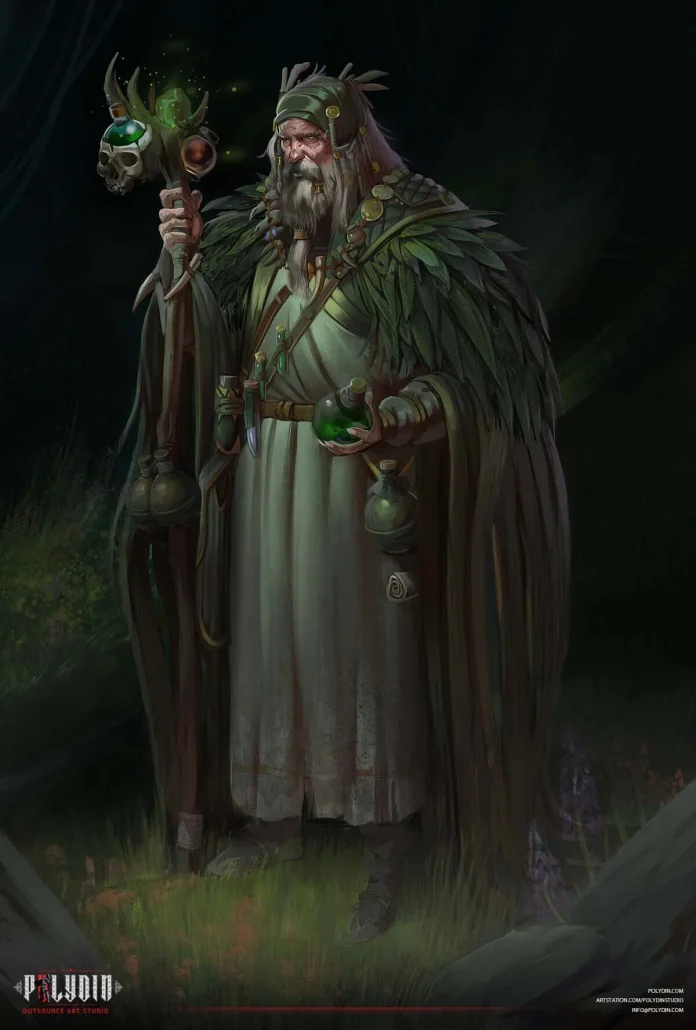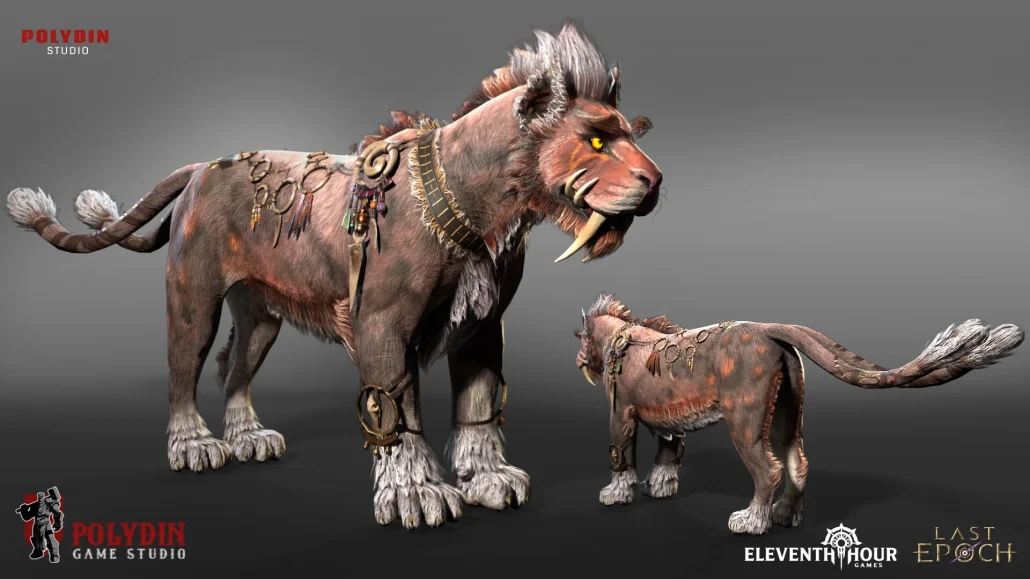Color plays a pivotal role in shaping the player experience within video games, influencing emotions, guiding attention, and even affecting gameplay decisions. From conveying mood and atmosphere to establishing brand identity, the strategic use of color can profoundly impact player engagement and retention. In this exploration of the psychology of colors in games, we delve into the multifaceted functions of color, examining how it contributes to visual hierarchy, progression, mechanics, and content variation. Additionally, we uncover the psychological underpinnings behind color choices in game design, exploring their ability to evoke emotions, create distinct identities, and focus player attention. Through this analysis, we gain insight into the deep relationship between colors and game design, shedding light on their intricate interplay and profound effects on the player’s journey.
The Function of Color in Games
Color serves as a fundamental tool in game design, influencing various aspects of player experience and interaction. From establishing visual hierarchy to guiding progression and informing mechanics, the strategic use of color profoundly impacts gameplay. Moreover, colors serve as signifiers and identifiers, conveying vital information to players and contributing to the overall content variation within games. Let’s explore the multifaceted function of color in games, dissecting its role in shaping visual elements, gameplay mechanics, and player engagement.
Visual Hierarchy
In game design elements, visual hierarchy dictates the order in which elements are perceived and attended to by players. Color plays a crucial role in establishing this hierarchy, as it can draw attention to important elements, such as objectives, obstacles, or points of interest. By employing contrasting colors or vibrant hues, designers can emphasize key gameplay elements and guide players’ focus within the game environment.
Progression
Color progression is often utilized to convey a sense of advancement or change throughout the game experience. From Video Game level design to narrative progression, shifts in color palettes can signal transitions between different stages or evoke emotional responses tied to the game storyline. Whether through subtle shifts in tone or dramatic changes in hue, color progression can enhance the player’s sense of immersion and narrative continuity.
Mechanics
Colors are frequently integrated into game mechanics to communicate rules, feedback, or interactive elements to players. For example, color-coded indicators may denote the status of in-game resources, health levels, or available actions. Additionally, color can be used to differentiate between friendly and enemy units, highlight interactive objects, or indicate the outcome of player choices, thereby facilitating gameplay comprehension and decision-making.
Signifiers and Identifiers
Within the game environment, colors serve as signifiers and identifiers, conveying information about objects, characters, or environmental hazards. Designers utilize color associations and conventions to communicate meaning, such as using red to signify danger or green to represent health or vitality. These color-based signifiers help players navigate the game world, anticipate challenges, and make informed decisions during gameplay.
Content Variation
Color variation contributes to the visual richness and diversity of game content, allowing designers to create distinct environments, characters, and assets. By employing a diverse color palette, developers can evoke different moods, themes, or settings within the game world, fostering immersive and dynamic gameplay experiences. Additionally, color variation adds depth and interest to game visuals, enhancing player engagement and aesthetic appeal.


The Psychology of Colors in Games Design
Colors wield significant psychological influence in video game design, evoking emotions, shaping brand identities, and directing player attention. Understanding the psychological impact of colors allows game developers to craft experiences that resonate deeply with players and enhance immersion. Let’s delve into the intricate interplay between color psychology and video game design, exploring how different hues elicit emotional responses, establish brand identities, and guide player focus within the game environment.
Conveying emotion
Colors possess inherent emotional associations that can profoundly affect players’ moods and perception of the game world. Warm tones like red and orange evoke feelings of excitement, passion, or danger, while cool hues such as blue and green instill a sense of calmness, tranquility, or mystery. By strategically incorporating these emotional cues into game environments, characters, and narratives, designers can evoke specific emotional responses and enhance the overall player experience.
Creating a Brand Identity
In video game design, colors play a pivotal role in establishing a cohesive and recognizable brand identity for game franchises or studios. Consistent color schemes and visual motifs help differentiate games from competitors, foster brand loyalty, and convey thematic elements or genre conventions to players. Whether through iconic logo designs, promotional materials, or in-game aesthetics, colors serve as powerful branding tools that communicate the essence and personality of a game to its audience.
Focusing Attention
Colors serve as effective attentional cues, guiding players’ focus toward important elements within the game environment and directing their actions. Bright, contrasting colors can draw attention to interactive objects, key gameplay mechanics, or critical points of interest, while muted tones can create a visual hierarchy and minimize distractions. By strategically utilizing color to highlight objectives, obstacles, or rewards, designers can enhance player engagement, streamline gameplay comprehension, and facilitate intuitive navigation within the game world.
How Colors Can Affect Player Engagement and Retention in Games
Understanding the profound impact of colors on player engagement and retention is essential for game developers seeking to create immersive and memorable gaming experiences. Colors not only influence players’ emotional responses and brand perceptions but also play a crucial role in shaping gameplay dynamics and fostering long-term player commitment. Let’s explore the multifaceted ways in which colors can affect player engagement and retention in games, from enhancing immersion to reinforcing learning and motivation.
- Emotional Resonance: Colors evoke powerful emotional responses that can deeply resonate with players, influencing their overall gaming experience and level of engagement. Vibrant, appealing color palettes can create a positive and immersive atmosphere, heightening players’ enjoyment and motivation to continue playing. Conversely, jarring or discordant color combinations may disrupt immersion and detract from the overall gaming experience, leading to decreased player engagement and retention over time.
- Visual Clarity and Comprehension: The strategic use of colors in game design can enhance visual clarity and comprehension, facilitating players’ understanding of game mechanics, objectives, and interactive elements. Clear and intuitive color coding can effectively convey important information such as health status, resource availability, or enemy types, enabling players to make informed decisions and navigate the game world more efficiently. By promoting visual coherence and reducing cognitive load, well-designed color schemes contribute to improved gameplay flow and player retention.
- Brand Recognition and Loyalty: Consistent color branding can strengthen players’ emotional connection to a game franchise or game art studio, fostering brand recognition and long-term loyalty. Memorable color schemes and visual identities not only differentiate games from competitors but also evoke positive associations and memories, encouraging players to return to familiar gaming environments. Through strategic color branding across marketing materials, user interfaces, and in-game aesthetics, developers can cultivate a sense of belonging and affinity among players, ultimately enhancing engagement and retention in the gaming community.
The Impact of Color on Player Decisions, Choices and Actions
Color plays a fundamental role in shaping player decisions, choices, and actions within video games, exerting a profound influence on gameplay mechanics and player behavior. By leveraging the psychological principles of color perception and association, game developers can strategically use color to guide player decision-making, influence strategic choices, and encourage specific actions. Let’s delve into how color impacts player decisions, choices, and actions, shedding light on its transformative effect on the gaming experience.
- Visual Cues and Affordances: Colors serve as powerful visual cues and affordances within game environments, providing players with important information and signaling actionable elements. For example, colors can indicate the availability of resources, the presence of interactive objects, or the status of in-game entities, prompting players to make informed decisions and take strategic actions. By associating specific colors with particular gameplay mechanics or outcomes, developers can communicate complex information to players intuitively, empowering them to navigate the game world with clarity and confidence.
- Psychological Priming: Colors can prime players’ minds and influence their cognitive processes, shaping their perceptions, attitudes, and preferences. Through color association and conditioning, developers can evoke specific emotions, motivations, and behavioral tendencies in players, influencing their decision-making and gameplay strategies. For instance, warm, vibrant colors may evoke feelings of excitement and urgency, prompting players to adopt more aggressive or risk-taking behaviors, while cooler, subdued colors may encourage a more cautious or strategic approach. By strategically aligning color palettes with desired player behaviors, developers can subtly guide and shape the player experience.
- Narrative and Emotional Impact: Colors play a pivotal role in conveying narrative themes, emotional tone, and character motivations within video games, eliciting empathetic responses and shaping player engagement. By associating specific colors with narrative elements, character traits, or thematic motifs, developers can evoke powerful emotional responses in players, influencing their decisions and actions within the game world. For example, the use of ominous or foreboding colors may foreshadow impending danger or suspenseful plot developments, heightening tension and driving player engagement. Similarly, colors associated with positive emotions or narrative resolutions can inspire feelings of triumph, satisfaction, and fulfillment, motivating players to pursue their goals and overcome challenges.


The Deep Relation Between Colors and Game Design
In the realm of the psychology of colors in games and game design, colors wield a profound influence, serving as silent storytellers and silent guides through virtual worlds. The intricate relationship between colors and game design extends far beyond mere aesthetics, delving into the realms of psychology, immersion, and player engagement.
- Setting the Mood and Atmosphere: Colors play a pivotal role in establishing the emotional tone of a game environment. Warm colors like reds and oranges may evoke feelings of excitement or intensity, while cooler hues such as blues and purples can create a sense of calm or mystery.
- Visual Hierarchy and Gameplay Feedback: Different colors can be used to prioritize information and guide player attention. Bright, contrasting colors often signify important objects or objectives, while muted tones may indicate background elements. Colors can also provide feedback on gameplay mechanics, such as indicating health levels or highlighting interactive objects.
- Character and World Building: Colors contribute to the characterization of in-game entities and the depiction of virtual worlds. For instance, villains might be associated with darker, more sinister colors, while heroes may be represented by brighter, more vibrant hues. Environments can be themed around specific color palettes to evoke particular moods or aesthetics.
- Symbolism and Narrative Depth: Colors can convey symbolic meaning within the context of a game’s story or themes. For example, a recurring color motif might represent a character’s emotional journey or a game’s overarching themes. Symbolic colors can add layers of depth and complexity to narrative elements, enriching players’ understanding and engagement.
- Accessibility and Inclusivity: Thoughtful color design is crucial for ensuring accessibility and inclusivity in games. Developers must consider colorblindness and other visual impairments when designing game elements that rely on color cues. Implementing alternative color schemes, text labels, or iconography can help make games more accessible to a broader audience.
Final words
In conclusion, the psychology of colors in games is a multifaceted and powerful tool that developers wield to shape player experiences. From setting the mood and atmosphere to guiding player attention and conveying narrative depth, colors play a pivotal role in enhancing immersion and engagement. Understanding the psychological effects of colors enables developers to create more compelling and memorable gaming experiences, fostering emotional connections and deepening player involvement. As technology advances and game design evolves, the strategic use of colors will continue to be a fundamental aspect of interactive storytelling in Games and player interaction in the gaming industry.


